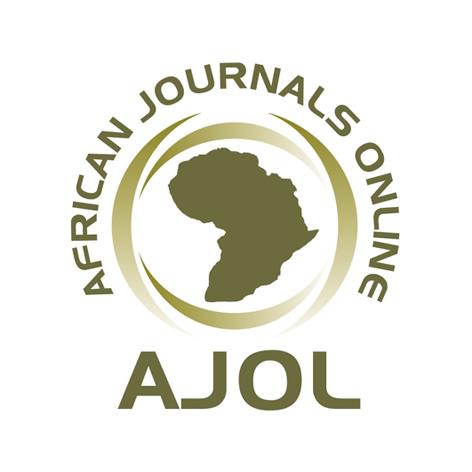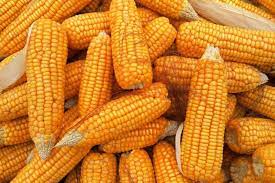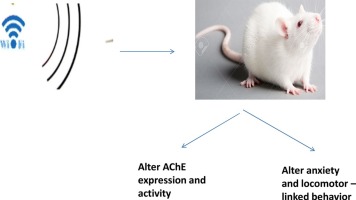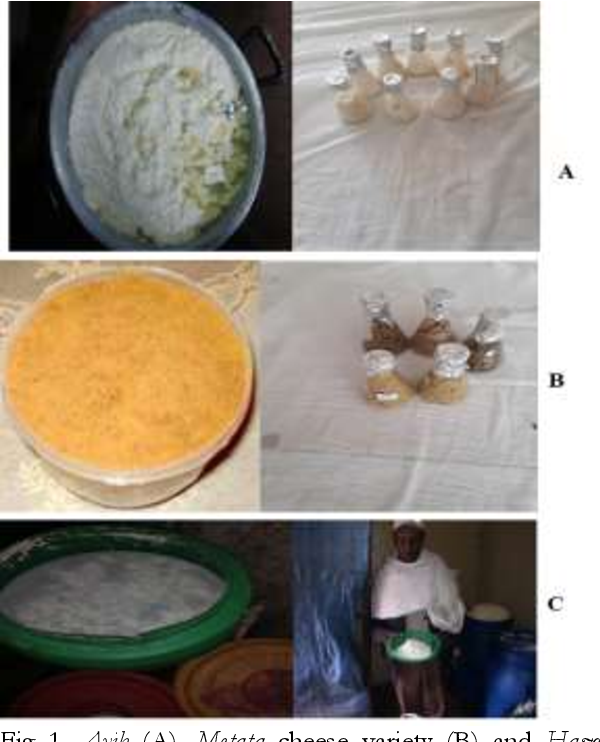Farmer Participatory Evaluation of Agronomic Performances of Bread Wheat Varieties in the Highlands of Eastern Ethiopia
June 1, 2013
Downloads
Deressa, H., N. Dechassa, M. Ketema, and T. Amanu. “Farmer Participatory Evaluation of Agronomic Performances of Bread Wheat Varieties in the Highlands of Eastern Ethiopia”. East African Journal of Sciences, vol. 7, no. 2, June 2013, pp. 121-8, doi:10.20372/eajs.v7i2.159.
Abebe, G.K., Bijman, J. Pascucci, S. Omta, O. 2013. Adoption of improved potato varieties in Ethiopia: The role of agricultural knowledge and innovation system and smallholder farmers’ quality assessment, Agricultural Systems 122: 22 – 32.
Al-Karaki, G.N. 2012. Phenological development-yield relationships in durum wheat cultivars under late-season high-temperature stress in a semiarid environment. International Scholarly Research Notices: Agronomy 1- 7.
Asnakew W., M. Tarekegn, B. Mengesha and A. Tefera. 1991. Soil fertility management studies and wheat in Ethiopia. pp 112-144, In: Hailu. D. G. Tanner and Mengistu H. (eds.). Proceeding of wheat research in Ethiopia: A historical perspective. International Maize and Wheat Improvement Centre (CIMMYT) and Ethiopian Agricultural Research Organization (EARO), Addis Ababa, Ethiopia.
Bishaw, Z., Turner, M., 2008. Linking participatory plant breeding to the seed supply system. Euphytica 163: 31–44.
Ceccarelli, S., Grando, S., 2007. Decentralized-participatory plant breeding: an example of demand driven research. Euphytica 155: 349–360.
CSA (Central Statistical Agency). 2013. Agricultural sample survey 2010/11. Report on area production of crops (private peasant holdings, Meher Season). The FDRE statistical bulletin, Addis Ababa, Ethiopia.
Dawit, A. 2010. The political economy of Ethiopian cereal seed systems: State control, market liberalisation and decentralization. Working paper 017, Future Agriculture..
EAAPP (Eastern African Agricultural Productivity Programme). 2012. Enhancing adoption of rust tolerant wheat varieties: Experience of EAAPP in Ethiopia. Ethiopian Institute of Agricultural Research Centre (EIAR), Addis Ababa, Ethiopia.
FAOSTAT. 2012. Agricultural production statistics. (http://www.fao.org/faostat.)(Accessed on 20 February 2013)
FARC (Fedis Agricultural Research Centre). 2013. Cereal Technology Generating Team annual research report. Harar, Ethiopia.
Hailu, G.M. 1991. Wheat production and research in Ethiopia. pp. 1-15. In: Hailu G. M., Tanner, D.G., Mengistu, H. (eds.). Wheat Research in Ethiopia: A Historical Perspective. IAR/CIMMYT, Addis Ababa, Ethiopia.
Hussain, M.I., Shah, S.H. 2002. Growth, yield and quality response of three wheat (Triticum aestivum L.) varieties to different levels of N, P and K. International Journal of Agriculture and Biology 4(3): 362-364.
Mathewos, A., Tewodros, M., Yasin, G. 2012. Participatory on-farm evaluation of improved bread wheat technologies in some districts of southern Ethiopia Journal of Biology, Agriculture and Healthcare. 2 (4): 85-91.
Nigussie, D., Mengistu, K., Haile, D., Wole, K., Tamiru, A., Olkeba, B., Samuel, T., Solomon, A. 2012. Analysis of socio-economic and bio-physical conditions through Participatory Rural Appraisal (PRA) for selected woredas of east and west Hararghe zones, eastern Ethiopia. Haramaya University CASCAPE Project Report, Ethiopia.
Solomon, G., Firdissa, E. 2012. Mirimir, monthly newsletter of Ethiopian Institute of Agricultural Research, National Wheat Research Project, Addis Ababa, Ethiopia..
Sperling, L., Ashby, J.A., Smith, M.E., Weltzien, E., McGuire, S., 2001. A framework for analyzing participatory plant breeding approaches and results. Euphytica 122, 439–450.
SAS (Statistical Analysis System). 1998. SAS Institute, Cary, NC, USA.
Tanner, D.G., Amanuel, G., Asefa, T. 1993. Fertilizer effect on sustainability in the Wheat based smallholder-farming systems of south-eastern Ethiopia. Field Crops Research 33: 235-248.
Thompson, J., Scoones, I., 2009. Addressing the dynamics of agri-food systems: an emerging agenda for social science research. Environmental Science and Policy Journal 12: 386–397.
Wale, E., Yallew, A., 2007. Farmers' variety attribute preferences: implications for breeding priority setting and agricultural extension policy in Ethiopia. African Development Review 19: 379–396.
Witcombe, J.R., Joshi, A., Joshi, K.D., Sthapit, B.R. 1996. Farmer participatory crop improvement: I. Varietal selection and breeding methods and their impact on biodiversity. Experimental Agriculture: 22, 443-460.
Witcombe, J.R., Joshi, K.D., Gyawali, S., Musa, A.M., Johansen, C., Virk, D.S., Sthapit, B.R. 2005. Participatory plant breeding is better described as highly client-oriented plant breeding. I. Four indicators of client -orientation in plant breeding. Experimental Agriculture 41: 299-319.
World Bank, 2005. Ethiopia: well-being and poverty in Ethiopia - the role of agriculture and agency. Report no. 29468-ET. World Bank, Washington, DC.
Zadoks, J.C., Chang T.T., Konzak C.F. 1974. A decimal code for the growth stages of cereals. Weed Research 14: 415-421.
Al-Karaki, G.N. 2012. Phenological development-yield relationships in durum wheat cultivars under late-season high-temperature stress in a semiarid environment. International Scholarly Research Notices: Agronomy 1- 7.
Asnakew W., M. Tarekegn, B. Mengesha and A. Tefera. 1991. Soil fertility management studies and wheat in Ethiopia. pp 112-144, In: Hailu. D. G. Tanner and Mengistu H. (eds.). Proceeding of wheat research in Ethiopia: A historical perspective. International Maize and Wheat Improvement Centre (CIMMYT) and Ethiopian Agricultural Research Organization (EARO), Addis Ababa, Ethiopia.
Bishaw, Z., Turner, M., 2008. Linking participatory plant breeding to the seed supply system. Euphytica 163: 31–44.
Ceccarelli, S., Grando, S., 2007. Decentralized-participatory plant breeding: an example of demand driven research. Euphytica 155: 349–360.
CSA (Central Statistical Agency). 2013. Agricultural sample survey 2010/11. Report on area production of crops (private peasant holdings, Meher Season). The FDRE statistical bulletin, Addis Ababa, Ethiopia.
Dawit, A. 2010. The political economy of Ethiopian cereal seed systems: State control, market liberalisation and decentralization. Working paper 017, Future Agriculture..
EAAPP (Eastern African Agricultural Productivity Programme). 2012. Enhancing adoption of rust tolerant wheat varieties: Experience of EAAPP in Ethiopia. Ethiopian Institute of Agricultural Research Centre (EIAR), Addis Ababa, Ethiopia.
FAOSTAT. 2012. Agricultural production statistics. (http://www.fao.org/faostat.)(Accessed on 20 February 2013)
FARC (Fedis Agricultural Research Centre). 2013. Cereal Technology Generating Team annual research report. Harar, Ethiopia.
Hailu, G.M. 1991. Wheat production and research in Ethiopia. pp. 1-15. In: Hailu G. M., Tanner, D.G., Mengistu, H. (eds.). Wheat Research in Ethiopia: A Historical Perspective. IAR/CIMMYT, Addis Ababa, Ethiopia.
Hussain, M.I., Shah, S.H. 2002. Growth, yield and quality response of three wheat (Triticum aestivum L.) varieties to different levels of N, P and K. International Journal of Agriculture and Biology 4(3): 362-364.
Mathewos, A., Tewodros, M., Yasin, G. 2012. Participatory on-farm evaluation of improved bread wheat technologies in some districts of southern Ethiopia Journal of Biology, Agriculture and Healthcare. 2 (4): 85-91.
Nigussie, D., Mengistu, K., Haile, D., Wole, K., Tamiru, A., Olkeba, B., Samuel, T., Solomon, A. 2012. Analysis of socio-economic and bio-physical conditions through Participatory Rural Appraisal (PRA) for selected woredas of east and west Hararghe zones, eastern Ethiopia. Haramaya University CASCAPE Project Report, Ethiopia.
Solomon, G., Firdissa, E. 2012. Mirimir, monthly newsletter of Ethiopian Institute of Agricultural Research, National Wheat Research Project, Addis Ababa, Ethiopia..
Sperling, L., Ashby, J.A., Smith, M.E., Weltzien, E., McGuire, S., 2001. A framework for analyzing participatory plant breeding approaches and results. Euphytica 122, 439–450.
SAS (Statistical Analysis System). 1998. SAS Institute, Cary, NC, USA.
Tanner, D.G., Amanuel, G., Asefa, T. 1993. Fertilizer effect on sustainability in the Wheat based smallholder-farming systems of south-eastern Ethiopia. Field Crops Research 33: 235-248.
Thompson, J., Scoones, I., 2009. Addressing the dynamics of agri-food systems: an emerging agenda for social science research. Environmental Science and Policy Journal 12: 386–397.
Wale, E., Yallew, A., 2007. Farmers' variety attribute preferences: implications for breeding priority setting and agricultural extension policy in Ethiopia. African Development Review 19: 379–396.
Witcombe, J.R., Joshi, A., Joshi, K.D., Sthapit, B.R. 1996. Farmer participatory crop improvement: I. Varietal selection and breeding methods and their impact on biodiversity. Experimental Agriculture: 22, 443-460.
Witcombe, J.R., Joshi, K.D., Gyawali, S., Musa, A.M., Johansen, C., Virk, D.S., Sthapit, B.R. 2005. Participatory plant breeding is better described as highly client-oriented plant breeding. I. Four indicators of client -orientation in plant breeding. Experimental Agriculture 41: 299-319.
World Bank, 2005. Ethiopia: well-being and poverty in Ethiopia - the role of agriculture and agency. Report no. 29468-ET. World Bank, Washington, DC.
Zadoks, J.C., Chang T.T., Konzak C.F. 1974. A decimal code for the growth stages of cereals. Weed Research 14: 415-421.
Copyright (c) 2015 Haile Deressa, Nigussie Dechassa, Mengistu Ketema, Tamiru Amanu

This work is licensed under a Creative Commons Attribution-NonCommercial-NoDerivatives 4.0 International License.
- I am authorized by my co-authors to enter into these arrangements.
- I warrant, on behalf of myself and my co-authors, that:
- the article is original, has not been formally published in any other peer-reviewed journal, is not under consideration by any other journal and does not infringe any existing copyright or any other third party rights;
- I am/we are the sole author(s) of the article and have full authority to enter into this agreement and in granting rights to Springer are not in breach of any other obligation;
- the article contains nothing that is unlawful, libellous, or which would, if published, constitute a breach of contract or of confidence or of commitment given to secrecy;
- I/we have taken due care to ensure the integrity of the article. To my/our - and currently accepted scientific - knowledge all statements contained in it purporting to be facts are true and any formula or instruction contained in the article will not, if followed accurately, cause any injury, illness or damage to the user.
- I, and all co-authors, agree that the article, if editorially accepted for publication, shall be licensed under the Creative Commons Attribution License 4.0. If the law requires that the article be published in the public domain, I/we will notify Springer at the time of submission, and in such cases the article shall be released under the Creative Commons 1.0 Public Domain Dedication waiver. For the avoidance of doubt it is stated that sections 1 and 2 of this license agreement shall apply and prevail regardless of whether the article is published under Creative Commons Attribution License 4.0 or the Creative Commons 1.0 Public Domain Dedication waiver.
- I, and all co-authors, agree that, if the article is editorially accepted for publication in Haramaya Journals, data included in the article shall be made available under the Creative Commons 1.0 Public Domain Dedication waiver, unless otherwise stated. For the avoidance of doubt it is stated that sections 1, 2, and 3 of this license agreement shall apply and prevail.












